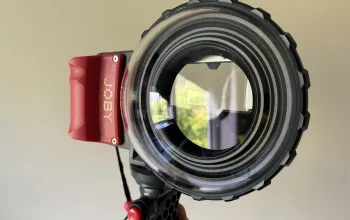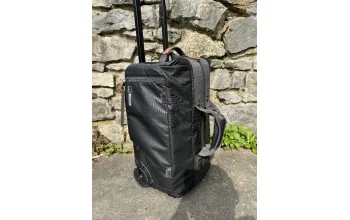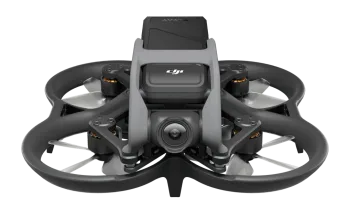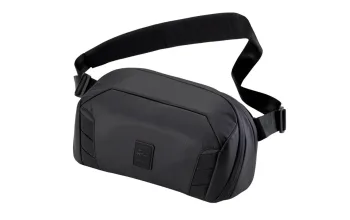Manfrotto's MVG460 is the big brother to the MVG220 reviewed previously on Active Traveller. Compared to the 220 this is a much larger gimbal capable of carrying a heavier camera and lens combination, up to a massive 4.6kg. Not only this, but it is also bigger in dimension, with more usable space inside the arms meaning that you ultimately have loads of space in which to adjust and balance your camera.
This is fantastic for those with modern, lightweight camera bodies with long and heavy lenses like the popular Panasonic GH5 and Sigma 18-35mm combination. In this scenario the camera needs to be adjusted right back, and with most gimbals this will result in the eyepiece hitting the arm. The MVG460 however deals with this specific camera and lens combination perfectly.
With the large weight capacity, the motors are not the best when faced with a light load. My setup is around 1.6kg and with that the motors are all adjusted almost to their minimum setting. If your setup is any lighter the motors will buzz and vibrate, this can, however, be remedied by using counterweights.
Balancing is the Achilles heel of most gimbals, but the MVG460 has locking on each axis and a tripod to stand the gimbal on while you go through the process. It also has a handy quick release plate so that once balanced you may never have to do it again, presuming you don't change lenses, or add an ND filter, or a sun hood.....you get the picture. The only minor gripe we have is that the arms don't slide particularly smoothly so minute adjustments are tricky.
The gimbal itself weighs 1.65kg and is quite large in all respects making it harder to handle than its little brother or a Zhiyun Crane 2 for instance. If your setup doesn't necessitate a high payload capacity or vast adjustment space, we would recommend the excellent MVG220.
There are a variety of ¼ inch thread mounts around the gimbal, so it isn't hard to add an arm extension here or there to make handling easier and there are also plenty of universal dual grip adapters available if you want to really up your game. These ¼ inch threads are also ideal for mounting accessories such as monitors and mics.
The app connects and works seamlessly, it allows you to control the gimbals movement from your phone and make setting adjustments such as motor strength and joystick sensitivity.
We found using the joystick and touchscreen a fairly good experience although you need strong hands and wrists to keep movement on the joystick and gimbal smooth at the same time. The touchscreen offers camera adjustments, like ISO and aperture if you have a compatible camera, which can be handy for minimising hand contact with the carefully balanced camera. You can also release the shutter and start and stop video directly from the gimbal.
Gimbal movement itself is split into four basic modes, pan, pan and tilt, all follow and lock. These all work without fault and are quickly and easily switched between as they're represented on four buttons on the main screen. You also get inception, selfie, portrait and timelapse modes, again all really easy and intuitive to get access.
Overall, the Manfrotto MVG460 gimbal represents a step up for film makers and videographers, whether upgrading to a bigger, heavier camera or balancing a large lens on a lightweight camera. The build quality is good (but maybe not quite on par with DJI) and so far, the gimbal has excelled in real world situations. If your camera doesn't need it then definitely get a smaller and lighter gimbal but for the purpose it serves the MVG460 is highly recommended.
READ NEXT: Best Kit for Travel Video and Photography





















